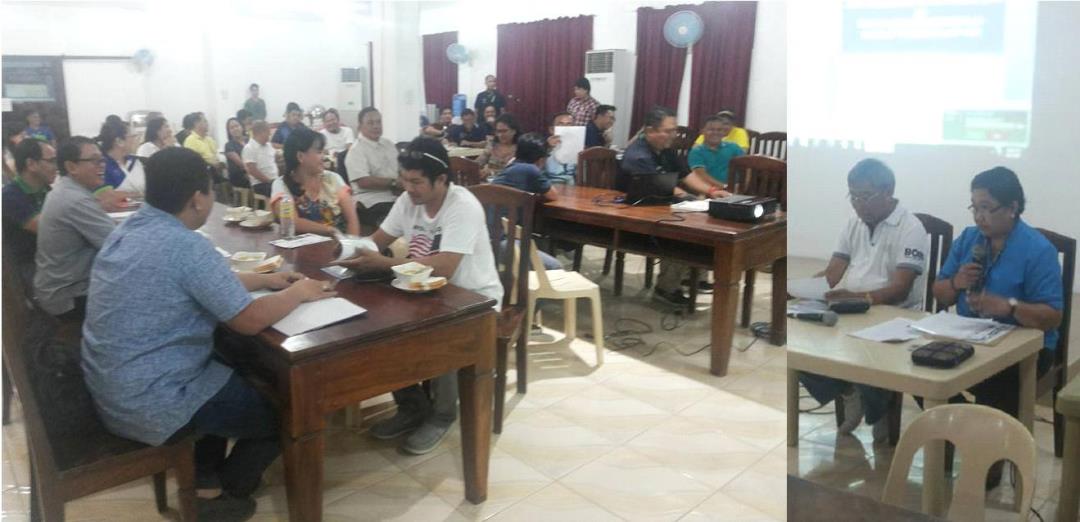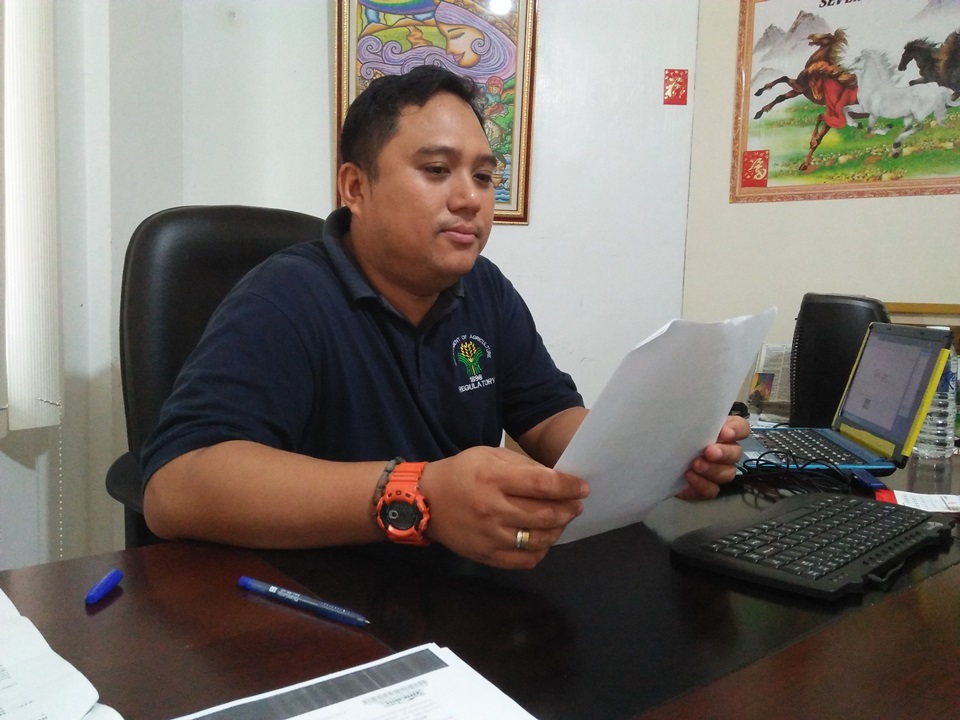ILOILO CITY -- The Department of Agriculture (DA) has activated its regional avian influenza task force in Western Visayas following a meeting of the Regional Advisory Committee for Animal Disease Control and Emergency (RAC-ADCE) on Tuesday afternoon.
“Through this, we can give utmost priority to activities such as surveillance,” said Dr. Jonic F. Natividad, chief of the DA regulatory division, citing avian influenza (AI) or bird flu as an “economically disastrous disease.”
Also, it will “motivate local government units to protect their turf,” he added.
RAC-ADCE is composed of multi-sectoral groups with six teams working under it namely surveillance, animal control movement, laboratory diagnosis, public information, data base/GIS and vaccination.

DA RED Remelyn R. Recoter and RAC-ADCE President Jesse E. Pareja (inset ) co-presided the meeting of the Regional Advisory Council for Animal Diseases Control and Emergency at WESVIARC, Jaro, Iloilo City, August 15, 2017. (Photo by DA-RAFIS 6)
During the meeting, the Department of Environment and Natural Resources (DENR) also presented the 34 identified landing areas of migratory birds in Western Visayas. The critical areas are mostly in Sipalay and Himamaylan in Negros Occidental; Roxas City in Capiz; Ajuy, Sara and San Dionisio in Iloilo and Antique.
He recalled that according to DA Secretary Manny Piñol, one of the suspected causes of the AI outbreak in central Luzon are migratory birds. Others could be due to smuggled poultry products from AI-affected countries and other smuggled items.
Migratory birds settle in Southeast Asian countries every winter, Natividad said. The Philippines is “one of their favorite landing spots. After a while they will again look for a 'greener pasture' but those who are sickly and weak will just stay."

“A few grams of the feces of migratory bird or chicken once it comes into contact with feeds or water being given to chicken can spread up to 1,000 birds. That’s how infective it is,” he explained.
Nonetheless, massive information drive has been taken in the region to raise public awareness about AI. Signages, information and education campaign materials were also distributed, he said.
The surveillance team will also visit the landing places of migratory birds for monitoring.
Natividad also warned the public about the “live bird markets,” or those that are being sold along streets. He cited that in Vietnam, one of the sources of infection is the live bird.
He urged not to sell “sickly chicken.”
DA regional executive director Remelyn Recoter has instructed quarantine officers to strictly enforce quarantine laws round-the-clock. The Animal Quarantine, through Dr. Nilo Lingaya, is on the lookout in port of entries such as Caticlan in Aklan, Dumangas Port in Iloilo and Fort San Pedro in this city.
An animal checkpoint and AI hotlines have been activated in the various provinces of the region.
In Caticlan, “balut” and hatching eggs numbering around 10, 000 to 30,000 were shipped back to their origin in Luzon.
“There was a memorandum circular from our Secretary that since Friday live domestic poultry and their by-products from Luzon are no longer allowed to travel to Visayas,” he said. However, those coming from Mindanao and Visayas can still be shipped to Luzon.
While Western Visayas remains free from the bird flu, he urged the public not to be complacent. He also urged local government units to do their part and not leave everything to the agriculture department.
Director Recoter, during the meeting, directed RAC-ADCE members to identify possible sources of chicken meat and eggs in cases of prolonged restriction of poultry and poultry by-products from Luzon.
The region has a total population of 3,106,753 heads of broiler, 934,967 layers and 7,855,082 native chickens. Its average monthly requirement reaches 50,000 dressed chicken and 3.3 million table eggs, according to the DA regional agri-fishery information section (RAFIS) release.
RAC-ADCE president Jesse E. Pareja assured of the sufficient supply of eggs, which can be sourced out from the province of Negros Occidental.
Mindanao supplies chicks for those who are into poultry raising, Natividad said.
Recoter, meantime, will be flying to Manila Wednesday evening to attend a meeting with DA officials. She will be presenting the initiatives in Western Visayas to ensure that the region remains free of the bird flu. (PNA)
